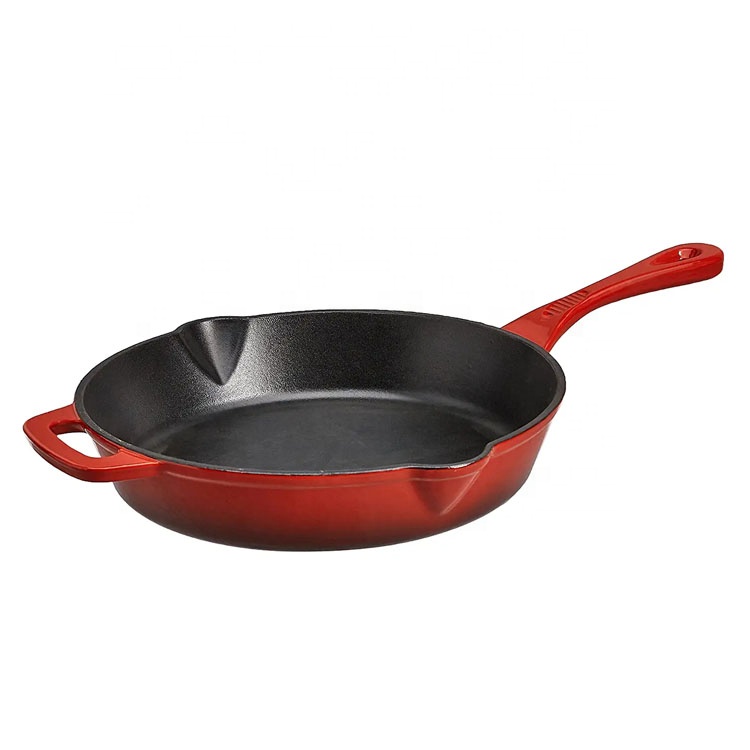
The Cast Iron Pan for Perfect Cooking Every Time
The Iron Skillet A Timeless Kitchen Companion
In the world of culinary tools, few items possess the charm and versatility of the iron skillet. Renowned for its durability and superior heat retention, the iron skillet has carved out a significant place in kitchens across the globe. This storied kitchen companion has a history that dates back centuries, and its enduring popularity speaks volumes about its functionality and the unique flavors it imparts to food.
A Brief History
The origins of the iron skillet can be traced back to ancient civilizations, where it was crafted by skilled blacksmiths. Initially, these skillets were used primarily for frying and sautéing over open flames. As cooking methods evolved and cast iron became more accessible, the skillet became a staple in many households. Its ability to withstand high temperatures made it perfect for searing meats and creating the coveted Maillard reaction that adds depth and complexity to flavors.
Versatility in Cooking
One of the standout features of the iron skillet is its versatility. From stovetop to oven, it does it all. You can start a dish on the stove, sear a steak or sauté vegetables, and then transfer it directly to the oven to finish cooking—all in the same pan. This method not only saves time on cleanup but also enhances the flavors, as the fond created during the initial cooking stage incorporates itself into the final dish.
Whether you're making a classic cornbread, a frittata loaded with seasonal vegetables, or a rustic apple crisp, an iron skillet can do it all. Its ability to create a crispy crust, retain moisture, and provide even heat distribution makes it a favorite among chefs and home cooks alike.
Health Benefits
the iron skillet

Interestingly, cooking with an iron skillet can also offer health benefits. When food is prepared in a cast iron pan, small amounts of iron can leach into the food. This can be especially beneficial for individuals who may be iron deficient or for those looking to increase their dietary iron intake. However, it’s important to balance this benefit with the fact that excessive iron can also pose health risks.
Care and Maintenance
To keep your iron skillet performing at its best, proper care is essential. Unlike other cookware, cast iron requires a bit more attention to maintain its non-stick surface and prevent rust. After each use, it’s recommended to clean the skillet with warm water and a brush, avoiding soap that can strip away the seasoning. Once cleaned, dry the skillet immediately and apply a thin layer of oil to protect it from moisture. This simple maintenance routine will not only prolong the life of your skillet but will also improve its cooking performance over time.
A Sustainable Choice
In today’s age of disposable kitchenware, opting for an iron skillet is a decision that leans towards sustainability. Made from raw materials, cast iron skillets can last for generations with the right care. They are an eco-friendly choice compared to non-stick or aluminum pans that may need frequent replacement. Additionally, their robust design makes them an heirloom piece that can be passed down through families, sharing culinary traditions and stories.
Conclusion
The iron skillet isn’t just a tool; it’s a legacy. Its ability to adapt to various cooking methods and its rich history contribute to its standing as a beloved kitchen essential. Whether you’re a novice cook or a seasoned chef, the versatile iron skillet can elevate your cooking game and inspire creativity in the kitchen. So the next time you prepare a meal, consider reaching for that trusty iron skillet, and savor not just the food, but also the connection to culinary traditions that it brings to your table.
-
Season Cast Iron Perfectly with GPT-4 Turbo TipsNewsAug.01,2025
-
High Quality Cast Iron Cookware - Baixiang County Zhongda MachineryNewsAug.01,2025
-
Premium Cast Iron Pan: Durable & Perfect HeatNewsAug.01,2025
-
High Quality Kitchen Durable Black Round Cast Iron Cookware Pancake Crepe Pan-Baixiang County Zhongda Machinery Manufacturing Co., Ltd.NewsAug.01,2025
-
Cast Iron Cookware - Baixiang County Zhongda Machinery | Nonstick, Heat ResistanceNewsAug.01,2025
-
High Quality Kitchen Durable Black Round Cast Iron Cookware - Baixiang County Zhongda Machinery | Non-Stick, Heat Retention, DurableNewsJul.31,2025


